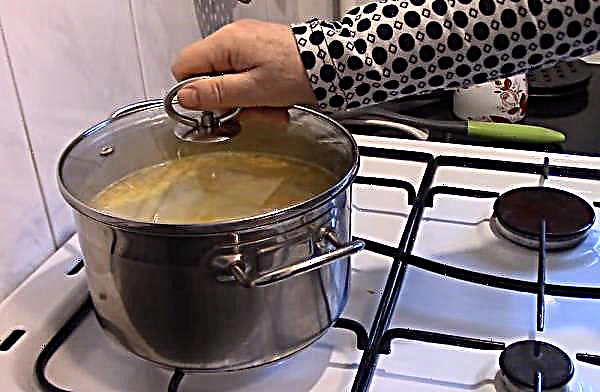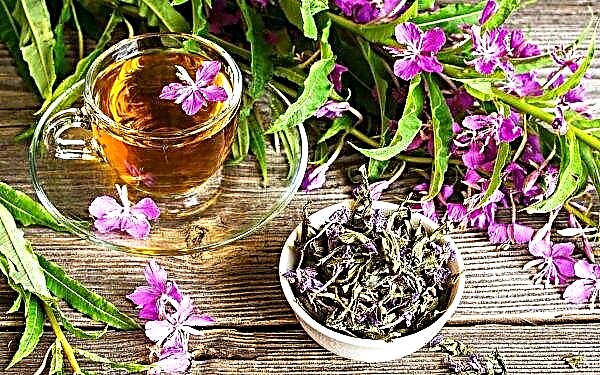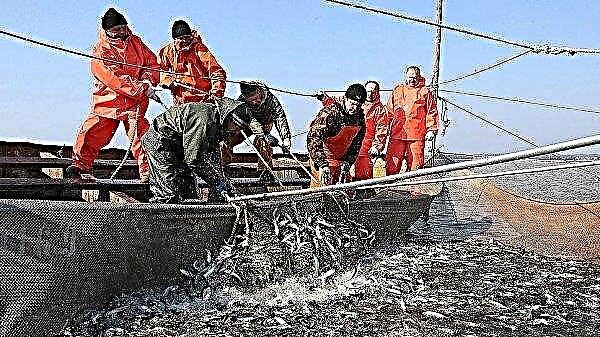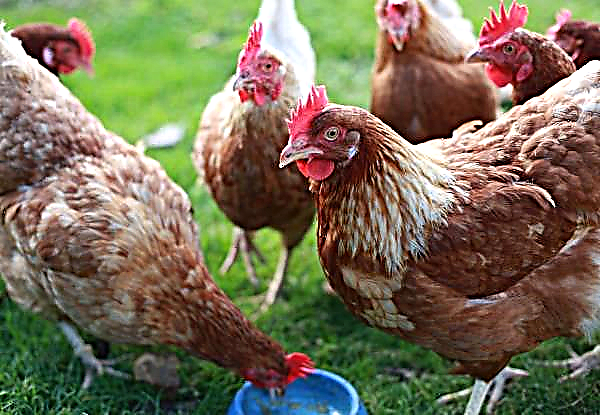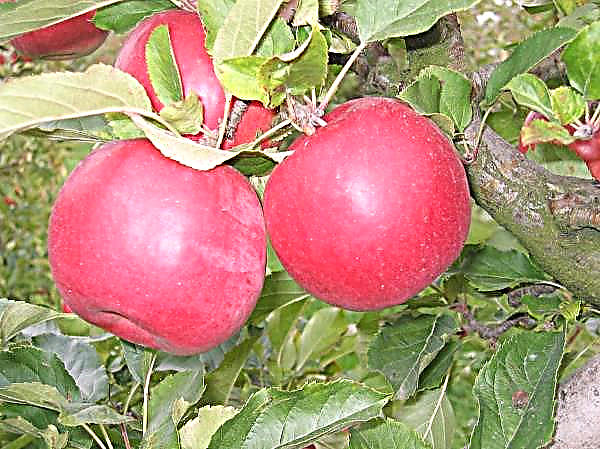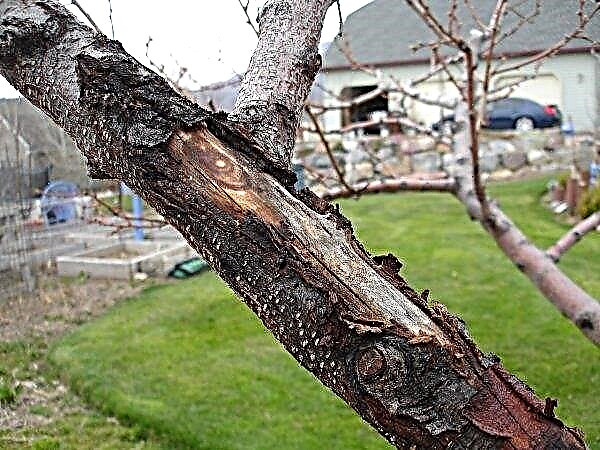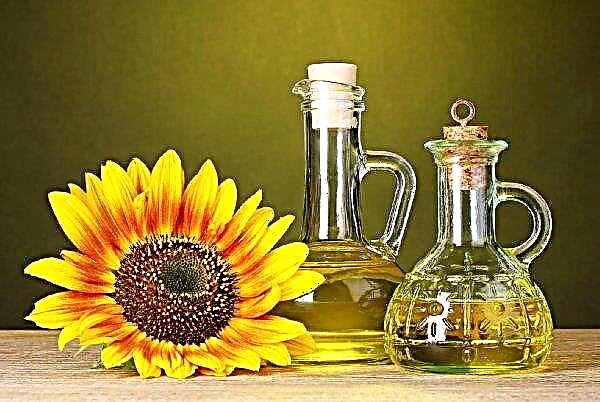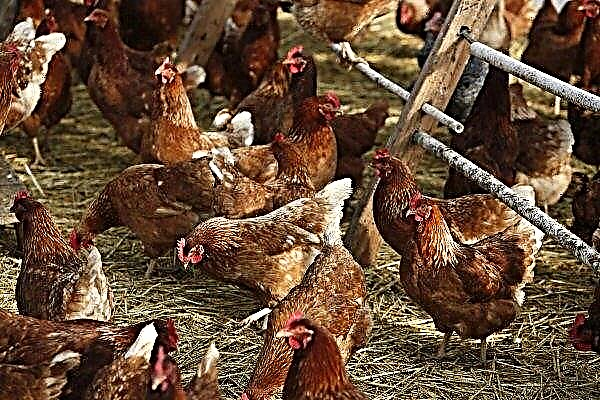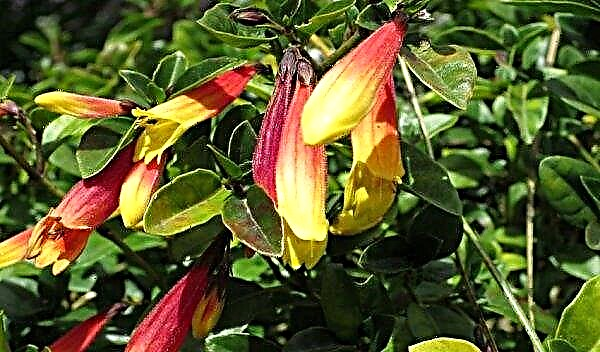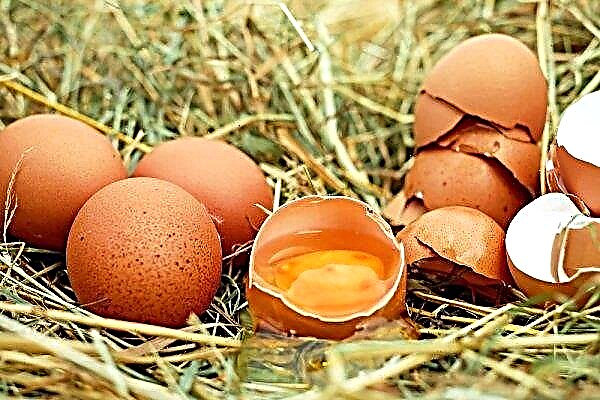Admirers of large-fruited tomatoes, which have a meaty structure, will certainly like the Eagle Heart variety. These fruits are well suited for use in various dishes and for canning. About the rules for growing this variety of tomatoes - later in the article.
Description and characteristics of the variety
This variety is the result of the work of Russian breeders. Its author is Vladimir Dederko. The variety was registered in 2003, and in 2005 it was officially introduced into the State Register, after which gardeners got the opportunity to grow it on their sites. In addition to Russia, consumers of the Eagle Heart variety are Ukraine and Moldova. The variety is suitable for growing for sale on an industrial scale, as well as for private households.
It is recommended to grow this tomato in greenhouses, however in the southern regions it can grow in open ground. The first fruits on the bushes appear already on the 115th day after planting. The tomato as a whole is not picky in care and can withstand unstable weather and temperature changes.

Initially, this is a high-yield variety, but the number of tomatoes harvested directly depends on the fertility of the soil. Fruits are quite stubborn and do not deteriorate during transportation. Bushes of this variety are considered to be determinant, and grow up to 1.5 m. Several clusters of fruits are placed on them.
The tomatoes themselves are heart-shaped, pointed to the bottom. One fruit can weigh up to 1 kg. During ripening, the fruit changes color from light green to bright pink. The fruits are juicy, with a small number of seeds, the flesh tastes sweetish, with sour notes, the skin is dense. This variety is universal in use, can be used both for canning and for the preparation of salads. Also suitable for making juices and mashed potatoes.
Advantages and disadvantages of the variety
- This relatively new tomato variety has many advantages over other varieties of culture, which is why he has long been fond of gardeners:
- Due to the rather vague period of fruit ripening, this variety can be harvested for several months.
- Due to the high productivity of the Eagle's Heart, about 10 kg of tomatoes can be harvested from 1 m² of bed. But with good care, the bushes can produce up to 17 kg of crop from the same area.
- Thanks to the dense skin, the tomatoes do not crack and retain their presentation for a long time.
- Fruits can be stored fresh for up to 4 months.
- The variety is immune to many tomato ailments.
- The tomato bush is resistant to weather changes.
The determinant varieties of tomatoes also include:
- This variety also has some disadvantages, and the most common of them are:
- To grow tomatoes, you must carefully select a very fertile soil.
- Due to the large height of the bush and a large amount of greenery, tomatoes need to be regularly stepsoned.
- Caring for plants can be time consuming when cultivating a variety by beginners.
Optimum timing for sowing
In order to start growing crops on time, it is necessary to correctly calculate the sowing dates of this variety. Seasoned gardeners are advised to do this in late March or early April. In this case, in the summer you can move the seedlings to a permanent place of growth.

In the northern regions, it is better to wait a bit with sowing varieties and wait about a month. So still fragile seedlings will be insured against defeat by night frosts. You can determine the time of planting in the ground by observing the development of the plant. If 7 leaves have already appeared on the seedlings, then tomatoes can be safely planted.
Growing Features
Each tomato variety is distinguished by the specifics of growing and caring for it. Therefore, it is important to become familiar with these features before starting to cultivate tomatoes.
Growing seedlings
It is recommended to grow seedlings in spacious boxes filled with fertile and loose soil. In the ground, it is necessary to make furrows with a depth of about 1 cm, and put seeds in these grooves - carefully spread them on the surface at a distance of about 3 cm from each other. The gaps between the furrows should also be 3 cm. Boxes with seedlings should be placed in a warm and bright place, with an air temperature of + 25 ° С.

As soon as the first shoots hatch, the temperature should be reduced by about half. This is required in order to even out the growth of sprouted and still pecking plants. Thus, the air should be between + 10 ° C at night and + 15 ° C during the day. It is necessary to ensure that the room is well lit throughout the growing period of seedlings. Watering is recommended only when the topsoil with seedlings dries.
Pick pick should be carried out after the appearance of the 3rd leaf. This is necessary so that the plant can form a strong root system. For each sprout, you need to take a separate container with pre-prepared fertile soil and place the tomato there. Before diving, experienced gardeners recommend treating the roots of seedlings with a weak solution of potassium permanganate.
Important! Tomatoes need to be dived already on the 12-18th day after seed germination. Do not delay with this procedure, as this can interfere with the normal development of plants.
Land preparation for disembarkation
This tomato variety grows well only on fertile soil. At the same time, the soil should be light and pass oxygen well - only this way the bush will develop normally. Often in stores you can find ready-made soil mixtures for growing this particular crop, but many summer residents prefer to do their own soil mix. In this case, you have to tinker a bit, but the preparation of the substrate will not be particularly difficult.

To enrich the soil, you will need to bring into the ground rotted compost, peat and ash, which can be taken from the furnace or after burning branches. It is ash that is the most important component, since it is useful for the healthy growth of the bush, and is also able to prevent the formation of rot and infection by the fungus.
If you decide to grow a tomato not in open ground, but in special containers, then first of all you have to process them with boiling water with potassium permanganate. Instead of potassium permanganate, boric acid can also be used. Gardeners often add superphosphate to the soil, which is also allowed. The only condition is strict adherence to the instructions.
Did you know? For many years, tomatoes were considered a poisonous plant, they were grown only as ornamental bushes. And in the American books on botany, a story is described about how the cook of George Washington tried to poison him with a dish from this vegetable.
Seedling Planting Technology
Seedlings are planted only after the appearance of the 7th true leaf on the plant. Landing is carried out approximately in May or June - this directly depends on the region of cultivation. For planting, you must first prepare the bed. Under each bush, you need to dig a separate hole with a width of 25 cm and a depth of 10 to 12 cm. In the wells, pour boiling water with diluted potassium permanganate, after which fertilizer can be applied.

The plant must be lowered into the pit at an angle of 50 ° so that the roots are directed to the south, and the tip to the north. It is important to note the fact that the lower leaves on the bush must be removed so that they do not have contact with the soil. Otherwise, the greenery lying on the ground can pick up a disease that will go to the rest of the plant, which will lead to the death of the bush.
Tomato Care Feature
You need to start caring for the crop from the moment you sow the seeds. Care must be taken to ensure that the soil is sufficiently moist and clean. It is recommended to timely remove weeds and loosen the soil.
Watering rates
You need to water the plant regularly, but in such a way that the water does not form a puddle and dirt in the hole. In addition, it is important to use only warm water. Its temperature should be about the same as the temperature of the air. Pour the liquid clearly under the root so that the water drops do not stagnate on the tops and do not provoke rot.

As well as waterlogging, Eagle's heart does not tolerate drought, so it is important to monitor the condition of the soil, especially in the hot season. Watering should be done a couple of times a week, and during the heat - every day.
Top dressing
This crop requires regular feeding, as it quickly depletes the soil. In order to make the soil more fertile, nitrogen is usually added to it, which is needed for the growth of greenery. But do not overdo it with him, as this can lead to a slowdown in the development of the fruit.

It is also worth adding organic fertilizers such as droppings or manure. This will help increase yields. And as mineral top dressing, you can use potassium, phosphorus or boric acid. In total, for the entire growth period of the culture, the Eagle Heart variety is recommended to be fertilized at least 3 times.
Important! It is better to feed tomato bushes in sunny warm weather so that there is no rain. Only in this way micronutrients are well absorbed into the soil and delivered to the roots of the tomato.
Pasynkovka and formation of a bush
Tomatoes can grow very quickly, which is why it is necessary to carry out pinching. The procedure must be carried out from the moment the sprout started to hatch over the first sheet. Pruning should be done at least once a week, then you can save the bush from excess greens, which will increase the flow of light to the fruits and improve the ventilation of the bush.
 Eagle heart can be formed in 1, that and 2 stems. So that a tall bush does not break, immediately after planting it must be tied to a support. As they grow, brushes with fruits should also be tied to the props. If you do not start to form a bush in time, then all the useful trace elements from the soil will not come to the fruits, but will go to the development of greenery.
Eagle heart can be formed in 1, that and 2 stems. So that a tall bush does not break, immediately after planting it must be tied to a support. As they grow, brushes with fruits should also be tied to the props. If you do not start to form a bush in time, then all the useful trace elements from the soil will not come to the fruits, but will go to the development of greenery.
Soil cultivation and weeding
From time to time it is necessary to weed a bed with tomatoes and loosen the soil. Between the bushes there should not be parasitic greenery, since it can drown out the crop and impair the passage of light to the tomatoes, and also prevent the bush from ventilating normally. Because of this, plants can appear rot and fungus, which can lead to the death of the crop.
It is also necessary to regularly loosen the soil in order to get enough air to the roots. It is especially important to loosen the soil after watering, since when drying the soil is taken crust. This should be done at least 1 time per week.
Diseases and pests of tomato Eagle heart
The Eagle Heart variety is immune to many diseases, but still it requires some preventive measures. This will help protect the culture from pests and diseases, as well as preserve the crop. Most often, this tomato suffers from black legs, rot, late blight and spotting. And parasites such as aphids, whiteflies and wireworms often attack a plant.

To protect plants from ailments, the soil is treated with a weak solution of potassium permanganate before transplanting. As a preventive measure, as well as for treating a variety, you can spray the Fitosporin plantings from time to time, with preparations with copper and specialized chemicals available in stores.
Did you know? In the world there are about 10 thousand varieties of tomatoes. The smallest tomato has a size of less than 2 cm in diameter, but the largest can reach a weight of about 1.5 kg.
Collection and storage of tomatoes
Harvesting and further storage of fruits takes a lot of time, because the bushes abundantly bear fruit. In order to collect tomatoes in time, the first thing you need to pay attention to their color. The skin should be evenly colored red so that there are no green spots on it. The entire crop needs to be washed from dirt and dried well, after which it can be put in a dark, cool place to store fresh.

So, in order to grow a truly tasty and high-quality Eagle Heart tomato and at the same time achieve a rich harvest, it is necessary to carefully study the features of its cultivation and strictly adhere to these recommendations.

